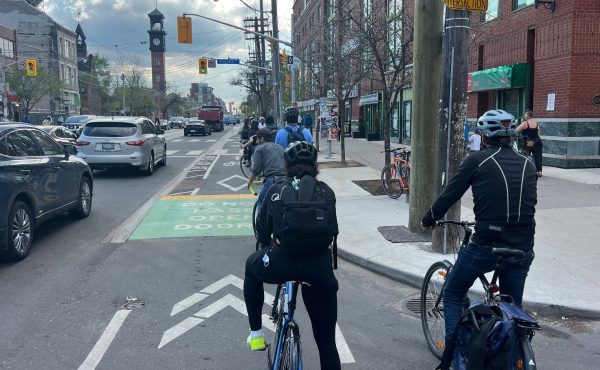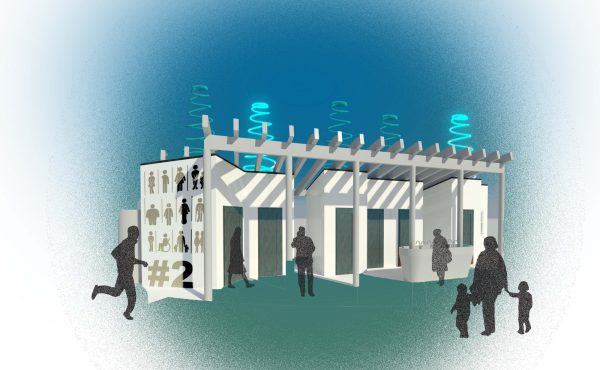When a new development is proposed in Toronto, the developer has to conduct “shadow studies” to make sure that it will not cast unreasonable shadow on important public space — such as streets and parks — or on private properties.
The problem is, these studies generally use as their benchmark the equinox — March and September 21. If it allows sunlight on a location on that day, a new building is deemed not to cast a shadow. In fact, what this means is that the building may well cast a shadow over public space for half the year.
Consider this new building on College at Markham. It is nine storeys, with the top storeys set back in order to allow greater sunlight onto the north side of this busy pedestrian street. This is the kind of building that is envisaged all along the south side of College between Spadina and Little Italy, as part of the city’s program of urban intensification along “Avenues” (despite the fact Harbord Village and Little Italy are already very densely populated).

This picture was taken on a gloriously sunny, crisp Saturday, October 14 — a perfect day for a walk — at around noon. The building has cast the entire north side of the street into a deep shadow. It’s not a big problem with one building, but imagine if there was a wall of these buildings along the south side of College. The entire street would be plunged into darkness during most daylight hours, for half the year. How would this affect the attractiveness of this currently vibrant public space?
On the west side of Markham, an older six-storey building — still a high density — nonetheless allowed sunlight onto the pedestrians walking along the north side at this time of year. A few storeys can make a big difference. Toronto’s east-west main streets are the heart of the central city’s life and identity. It’s important that we be careful what we do to them.



